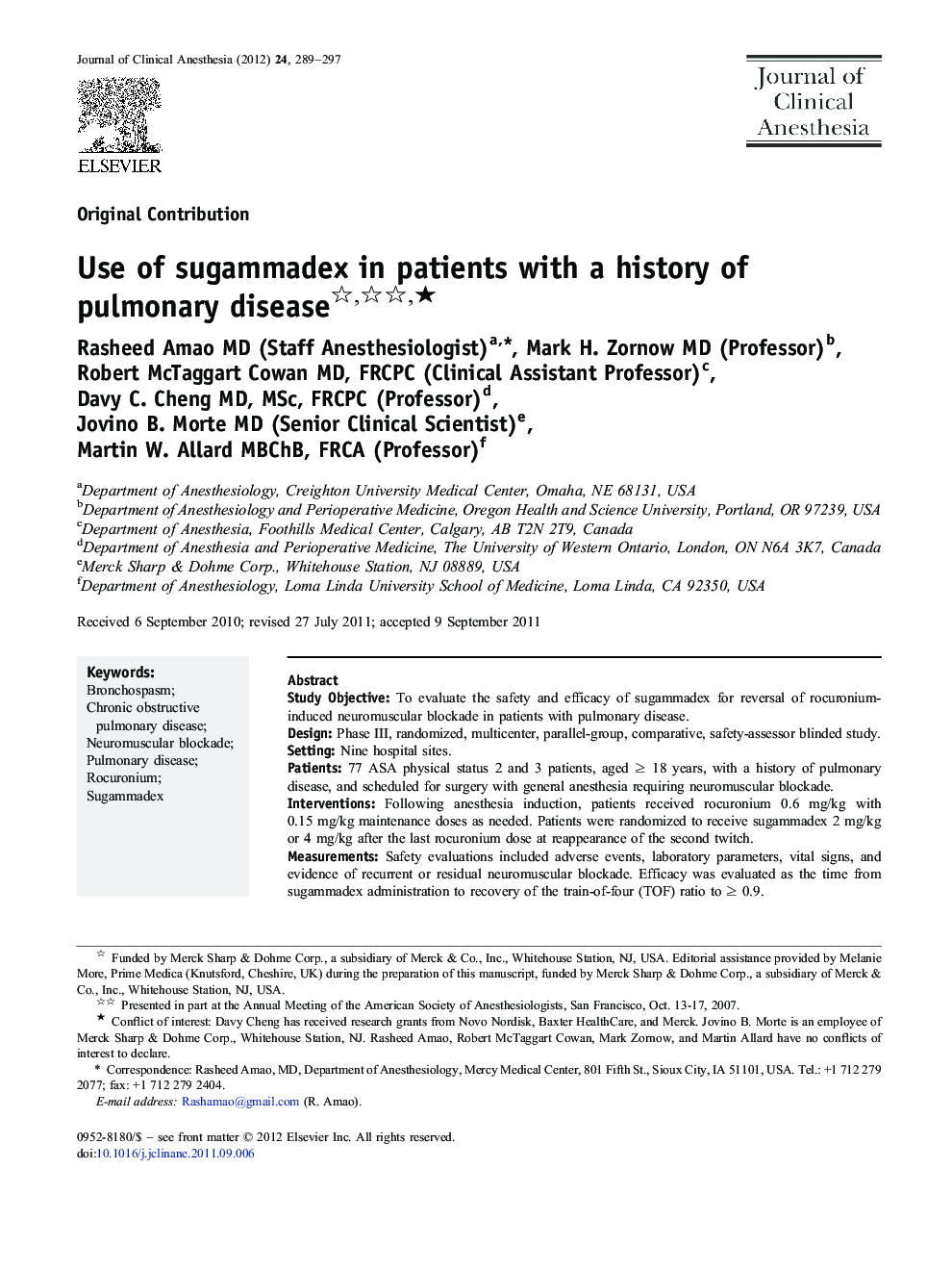| کد مقاله | کد نشریه | سال انتشار | مقاله انگلیسی | نسخه تمام متن |
|---|---|---|---|---|
| 5884993 | 1150745 | 2012 | 9 صفحه PDF | دانلود رایگان |

Study ObjectiveTo evaluate the safety and efficacy of sugammadex for reversal of rocuronium-induced neuromuscular blockade in patients with pulmonary disease.DesignPhase III, randomized, multicenter, parallel-group, comparative, safety-assessor blinded study.SettingNine hospital sites.Patients77 ASA physical status 2 and 3 patients, aged ⥠18 years, with a history of pulmonary disease, and scheduled for surgery with general anesthesia requiring neuromuscular blockade.InterventionsFollowing anesthesia induction, patients received rocuronium 0.6 mg/kg with 0.15 mg/kg maintenance doses as needed. Patients were randomized to receive sugammadex 2 mg/kg or 4 mg/kg after the last rocuronium dose at reappearance of the second twitch.MeasurementsSafety evaluations included adverse events, laboratory parameters, vital signs, and evidence of recurrent or residual neuromuscular blockade. Efficacy was evaluated as the time from sugammadex administration to recovery of the train-of-four (TOF) ratio to ⥠0.9.Main ResultsSafety was comparable between doses, with no evidence of residual or recurrent neuromuscular blockade. Two bronchospasm cases were reported (4 mg/kg group), both in patients with asthma who received desflurane for anesthesia maintenance. Geometric mean (95% confidence interval) times to a TOF ratio of ⥠0.9 were 2.1 (1.7 - 3.1) min (2 mg/kg) and 1.8 (1.5 - 2.7) min (4 mg/kg).ConclusionSugammadex 2 mg/kg and 4 mg/kg were well tolerated and effective in patients with a history of pulmonary disease. Bronchospasm is a possibility when administering sugammadex to patients with underlying pulmonary disease.
Journal: Journal of Clinical Anesthesia - Volume 24, Issue 4, June 2012, Pages 289-297